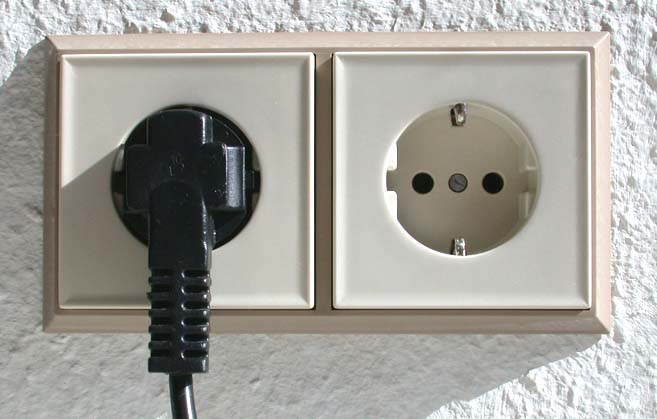The German-designed Schuko power plugs and sockets have a few advantages when compared to the American-style (or, “normal” as we call them) plugs.
From a safety perspective, the protruding metal clips establish a ground connection before the pins can even enter the socket. Better yet, the “snap-in” design makes it basically impossible for users to touch the connected pins and, as an added bonus, provides extra stability against accidently unplugging. But despite all this, Schuko sockets are not exactly fool-proof, as Henrik has learned.
“The moment I walked in to the office,” Henrik wrote, “I was cornered by two users complaining that their computers weren’t working. After an unnecessarily long dialog, they explained that their screens were blank.”
“I walk over to their desks and verified that yes, four out of the six screens were blank. The power LEDs weren’t lit-up and the button did absolutely nothing. Following the power cords behind the desk, I saw that the surge strip was not active and toggling it didn’t seem to do a thing.
“The outlet behind the surge strip was dead as well, and that called for a trip to the electric panel. The corresponding breaker had tripped, so I flipped it back and, like that, the problem was solved.
“At least... until the next week. Once again, their monitors went down, and I had to flip the breaker again. After the third failure, it was time to start replacing equipment. And that’s when I got a closer look at the power strip.
Henrik added, “the power strip was originally meant for mounting in a rack, and someone had the bright idea to keep the mounting screws. So, they put them in one of the sockets and taped it over with clear tape as to not fall out. I guess that was the day when one of the screws actually managed to go all the way into the socket.”
Ha! Try doing that in a normal socket!



